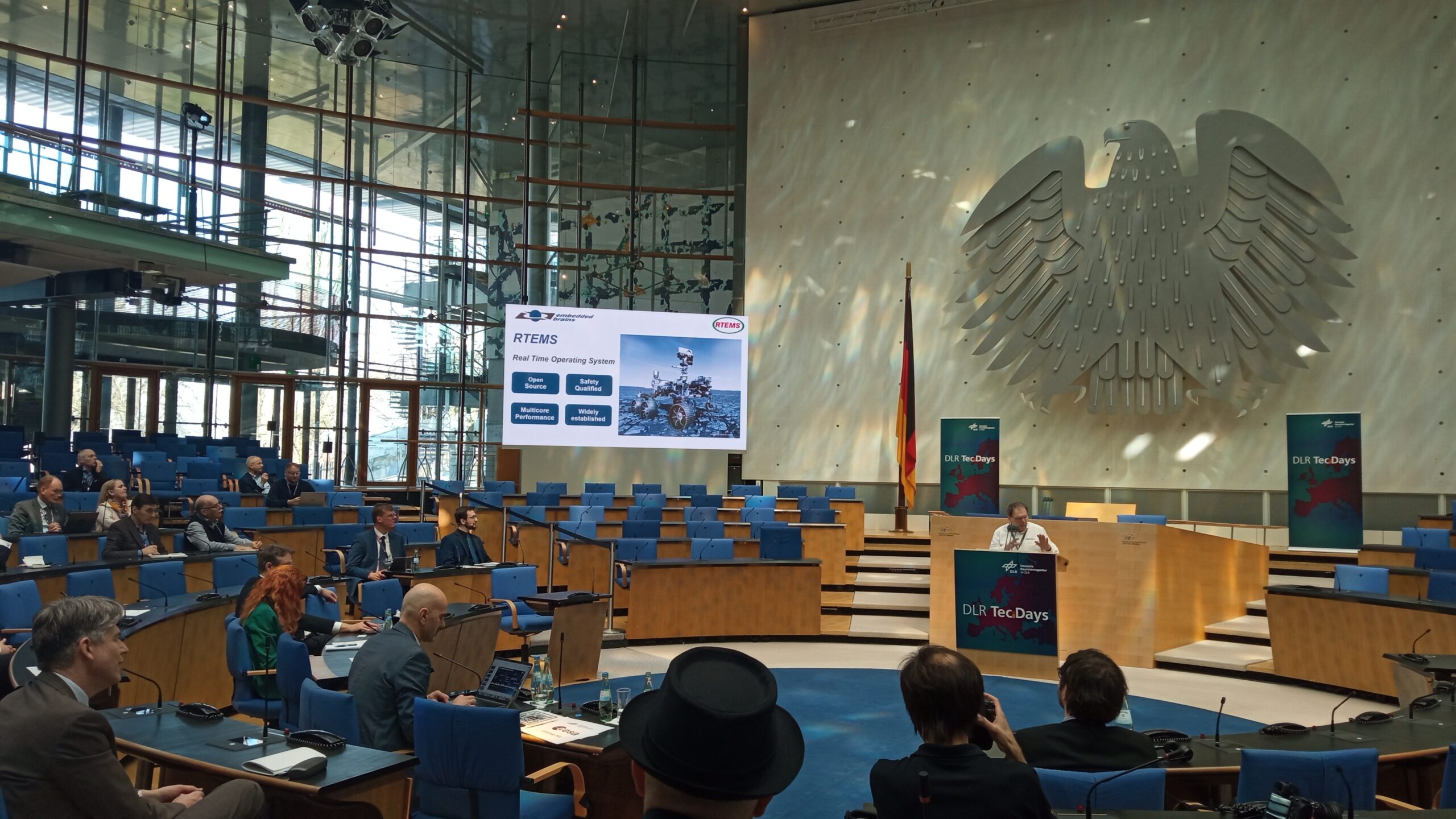by Matthias Goebel
Share

As part of the research initiative FORnanoSatellites, funded by the Bavarian Research Foundation, a consortium led by Friedrich-Alexander-University Erlangen-Nürnberg (FAU) is developing a scalable framework for industrial production of nanosatellites. The goal is to enable efficient and flexible deployment of modular CubeSats with a 10 cm edge length for a wide range of applications.
RTEMS real-time operating system as a key component
embedded brains contributes to the project with its space-qualified real-time operating system RTEMS, a software platform already used in numerous ESA and NASA missions. The implementation, however, is especially innovative: RTEMS runs not on a fixed hardware processor, but on a RISC-V softcore processor implemented within an FPGA (Field Programmable Gate Array).
Configurable hardware via configuration file
This architecture opens up new possibilities: rather than designing new hardware for every satellite mission, both the software and the underlying processor architecture in the FPGA can be adapted via a configuration file – with no physical changes required. This greatly reduces development time and cost, while enabling fast and straightforward adjustments for different mission profiles.
This creates maximum adaptability, especially valuable in space applications. A single hardware platform can be reused for multiple satellites. Adaptations to new sensors, mission goals, or energy profiles can be implemented entirely digitally – a decisive advantage when scaling CubeSat production.
embedded brains: Expertise in safety-critical space systems
With its contribution to FORnanoSatellites, embedded brains once again demonstrates its role as a trusted partner for highly reliable embedded solutions in aerospace. The combination of RTEMS and RISC-V on an FPGA platform showcases how software flexibility and hardware adaptability can be merged into a forward-looking space system architecture.

Matthias Goebel
/
17. November 2025

Matthias Goebel
/
3. March 2025

Matthias Goebel
/
2. December 2024


